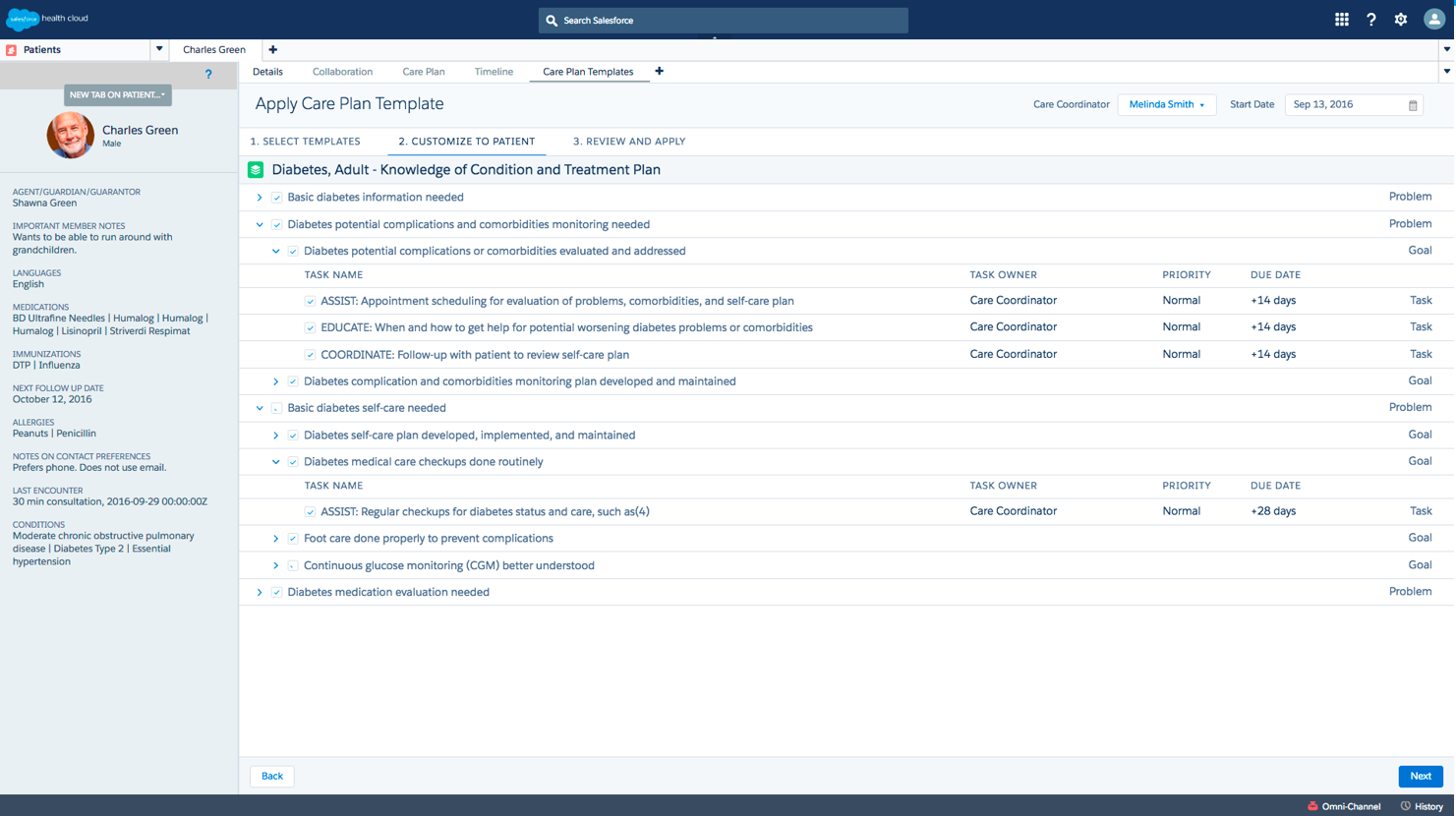
Get your FREE 30-day trial.
Please complete all fields.
Today marks a big milestone for the healthcare team at Salesforce. Healthcare organizations can now access care plan templates in Health Cloud, enabling them to apply predefined care protocols for patients via automated tasks and goals. What does this mean for the patient-caregiver relationship? These new templates help healthcare organizations standardize workflows and save time -- ultimately driving stronger patient engagement and better relationships.
One of the great things about the Salesforce platform is that we update our products three times per year, so we offer Health Cloud customers great new features as emerging technologies like mobile, social and data science become popular in the market. This is unique among health IT vendors. We’re able to take customer feedback and quickly iterate for their changing needs. For example, since we launched Health Cloud back in February, we’ve added Salesforce Shield for additional compliance and security of patient data; localized the product in six different languages; and unveiled a two-way video solution that powers telehealth scenarios between patients and care teams. Care plan templates are the latest in this cadence of innovation.

Care teams, caregivers and patients can use care plan templates to manage a list of actions tailored to the patient’s specific goals. This is important because many health care solutions today require massive -- and often time-consuming -- customization of individual plans by the care coordinator. With this feature, organizations can apply standards of care for populations of patients, such as those with diabetes or those recovering from hip replacements. Now, instead of having to enter standard protocols for each patient, healthcare professionals can focus on their most important needs, like ensuring patients get the best care possible.
How does it work? Organizations search pre-built templates for a specific diagnosis, customize as needed, assign care coordinators to different aspects of the care plan and then communicate next steps to the patient -- all in a few simple steps. For example, after a checkup of a patient with diabetes, a care coordinator can direct follow-up actions via the care plan template, such as scheduling a visit with a nutritionist, exercising 150 minutes a week and taking medications at the right time. These tasks would show up in a patient’s care plan within Health Cloud and within a mobile app -- ensuring both the patient and care provider have a complete view into the overall care journey.
To bring the new care plan templates to life, we are tapping into our vast ecosystem of partners to add content and other functionality. A good example of this is Healthwise, which infuses health education resources -- such as nutritional coaching for patients with high blood pressure or suggested exercises for people recovering from surgeries -- directly into care plan workflows. With Healthwise, patients receive tailored and meaningful information through videos, tips and other content to help them understand how to better manage their health.
Customized care plan templates in Health Cloud help care coordinators save time and provide high-quality care, while enabling personalization for each patient. This ensures they are engaged throughout their care journeys, and it’s one more way we are helping foster stronger patient relationships.